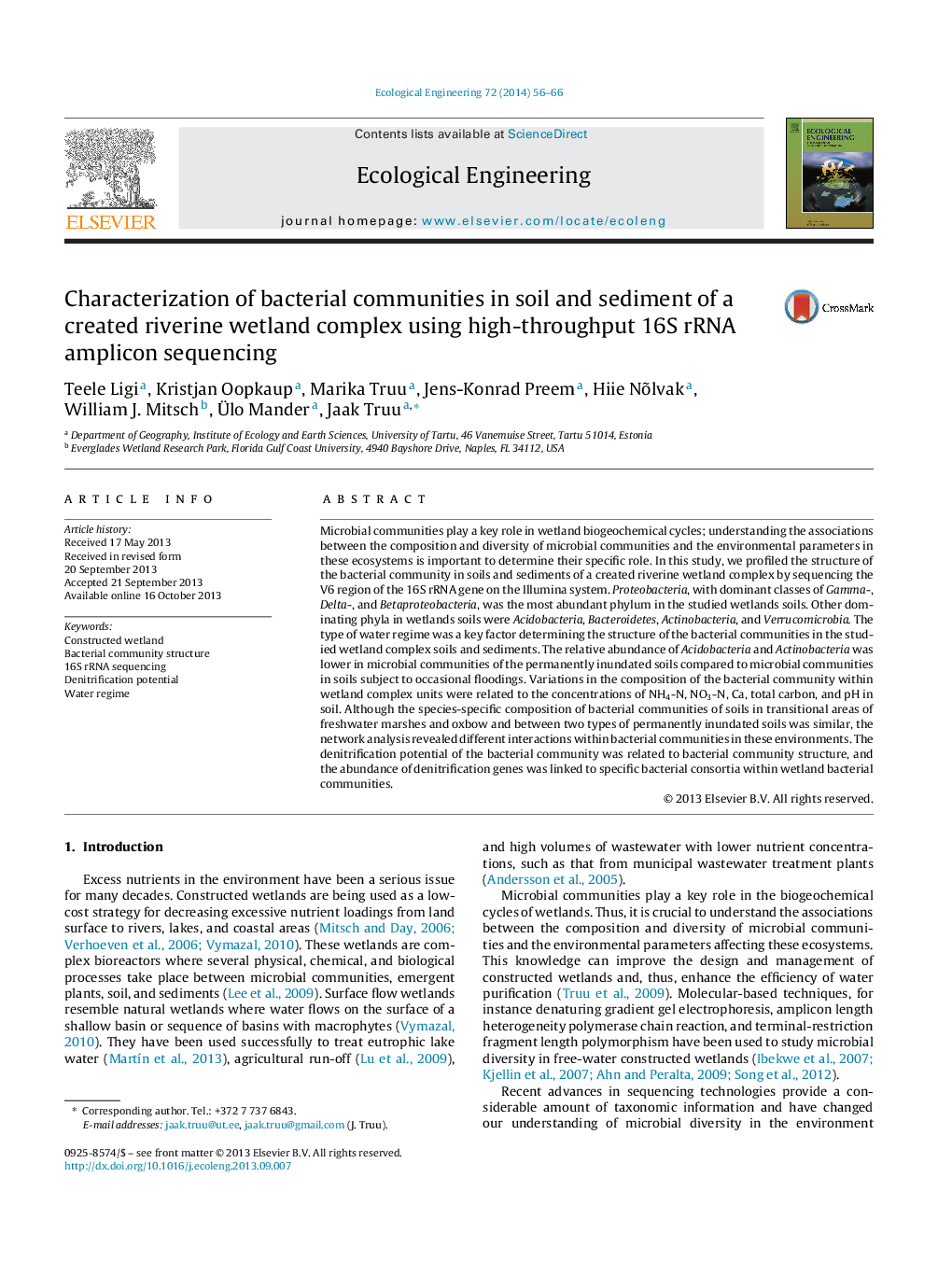| کد مقاله | کد نشریه | سال انتشار | مقاله انگلیسی | نسخه تمام متن |
|---|---|---|---|---|
| 4389359 | 1618027 | 2014 | 11 صفحه PDF | دانلود رایگان |

• Bacterial communities differed in upland and wetlands soils.
• Water regime determined bacterial community structure in wetlands soils.
• Bacterial community interactions were different in soils of transitional areas.
• Denitrification potential of bacterial community was related to community structure.
Microbial communities play a key role in wetland biogeochemical cycles; understanding the associations between the composition and diversity of microbial communities and the environmental parameters in these ecosystems is important to determine their specific role. In this study, we profiled the structure of the bacterial community in soils and sediments of a created riverine wetland complex by sequencing the V6 region of the 16S rRNA gene on the Illumina system. Proteobacteria, with dominant classes of Gamma-, Delta-, and Betaproteobacteria, was the most abundant phylum in the studied wetlands soils. Other dominating phyla in wetlands soils were Acidobacteria, Bacteroidetes, Actinobacteria, and Verrucomicrobia. The type of water regime was a key factor determining the structure of the bacterial communities in the studied wetland complex soils and sediments. The relative abundance of Acidobacteria and Actinobacteria was lower in microbial communities of the permanently inundated soils compared to microbial communities in soils subject to occasional floodings. Variations in the composition of the bacterial community within wetland complex units were related to the concentrations of NH4-N, NO3-N, Ca, total carbon, and pH in soil. Although the species-specific composition of bacterial communities of soils in transitional areas of freshwater marshes and oxbow and between two types of permanently inundated soils was similar, the network analysis revealed different interactions within bacterial communities in these environments. The denitrification potential of the bacterial community was related to bacterial community structure, and the abundance of denitrification genes was linked to specific bacterial consortia within wetland bacterial communities.
Journal: Ecological Engineering - Volume 72, November 2014, Pages 56–66